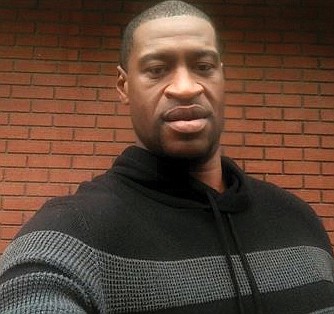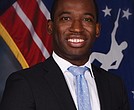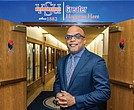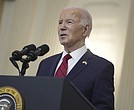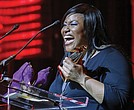Thousands of protesters hit the streets
Jeremy M. Lazarus | 6/4/2020, 6 p.m.
A white Minneapolis police officer’s killing of 46-year-old George Floyd by kneeling on his neck for nearly 9 minutes was the final straw.
Outrage over the death May 25 of Mr. Floyd has flowed through the streets of Richmond and cities across the country and around the world.
Huge throngs have turned out for nightly protests and marches — some of which have been marred by violence, looting and battles with police — triggered by fury over the Memorial Day slaying of the club security guard who was arrested for allegedly passing a phony $20 bill.
It hasn’t mattered that the officer, Derek Chauvin, and three fellow officers who did not intervene to save Mr. Floyd were immediately fired and that Mr. Chauvin is charged with second-degree murder. The three other officers were charged Wednesday with aiding and abetting second-degree murder.
It hasn’t mattered that, almost universally, police chiefs, including Richmond Police Chief Will Smith, condemned the actions of the four officers after viewing the viral cell phone video that showed Officer Chauvin kneeling on Mr. Floyd, whose last words included, “I can’t breathe.”
There has been an outpouring of fury not seen since the 1968 assassination of civil rights icon Dr. Martin Luther King Jr. led to upheaval in 100 cities. Cries of “No justice, no peace” and “Black Lives Matter” have been heard during the last week in cities in all 50 states and at least 20 cities around the world.
But it was not just black people who responded. The diversity of protesters was noticeable, with white and Latino people making up a large percentage of participants.
“It’s all of our fight,” said Army Reservist Malachai Johnson.
However, some people did not go unscathed. At least 6,000 people were reported arrested during the first six days of protests, at least six people have been killed and dozens of police reportedly have been injured, with at least one death.
In multiple states, including Virginia, the National Guard was mobilized to support police to quell weekend violence as numerous cities, including Richmond, reported buildings and cars burned and stores looted.
Richmond was among the places that imposed curfews. The 8 p.m. curfew led to 233 arrests in Richmond on Sunday night — at least half of which were of people who reportedly live outside the city. Police backed off making such arrests after magistrates and the Richmond Justice Center were overwhelmed in processing so many. Some detainees waited 15 hours or more to be processed.
The city police also backed off after the curfews failed to deter people from protesting late into the night, keeping more of an eye out for people seeking to do damage. Early Wednesday, police reported arresting at least seven people with handguns and fire-making accelerants who had been part of earlier protest marches. The curfew expired at 6 a.m. Wednesday, and city officials did not seek to extend it.
The protests also brought attention to the deaths of Mr. Floyd and other African-Americans, including Ahmaud Arbery, whom white vigilantes killed on Feb. 23 as he jogged outside Brunswick, Ga., and Breonna Taylor, an EMS worker whom Louisville police officers killed on March 13 during a mistaken raid.
Dr. Stephen Webster, author of a new book, “American Rage: How Anger Shapes Our Politics,” said in an interview that the time is ripe for rage.
Along with the high-profile killings of black people at the hands of white officers and others, “there are the inequalities in how the pandemic has affected black Americans,” Dr. Webster said. “We’re angry for so many reasons. If you were trying to make a cocktail of anger, this would be the perfect set of ingredients.”
When the protests will end is uncertain, though there appear to be signs that they are waning. On Wednesday evening at Free Press deadline, several hundred mostly young, mostly white, people marched in protest down Franklin Street to the State Capitol — a familiar route for many of the marches.
Whether the protests result in change remains to be seen.
In Virginia, some political leaders, including Gov. Ralph S. Northam, are pushing for new studies and recommendations to root out racist policies. Separately, some members of the General Assembly, including Richmond state Sen. Ghazala F. Hashmi, are laying out aggressive legislative agendas that could bring change in laws and policies involving police.
Some are calling for laws to reduce or limit the qualified immunity that largely shields officers from lawsuits.
And the governor and Mayor Levar M. Stoney are announcing plans to remove the Confederate statues – racist reminders of oppression— from Monument Avenue.
Mayor Stoney, 5th District City Councilwoman Stephanie A. Lynch and other members of City Council, who, like him, are facing re-election, also are talking up new policies, including support for a civilian review panel to investigate allegations of police misconduct.
Councilwoman Ellen F. Robertson, 6th District, also plans to bring back legislation that would seek “to reform all operations and budgeting to correct the city’s history of disparities.”
Applauding the energy and passion of the protesters, Ms. Robertson urged them to “stay strong” and join the effort to get rid of the “inequities in health care, finances, education, housing, nutrition and other basic necessities.”
What is certain is that the protests and related vandalism upended the attempt to reopen Richmond during the COVID-19 pandemic, particularly in the Downtown area.
Many city business owners, who had welcomed May 29 as their first opportunity to reopen and serve customers again, had customers disappear during the weekend and the early part of the week.
“We started strong,” barber Marvin Smith said Monday, “but all this has made it harder. I haven’t had a customer all day.”
Like in many cities, a big chunk of Richmond’s retail areas looks like it has been hit by a hurricane. Many of the storefronts in Downtown, Midtown and Carytown have boards over their windows, with signs or stickers prominently displaying BLM or Black Lives Matter, to ward off acts of vandalism or looting.
The city protests that began Friday night were initially peaceful, but ended with violent acts, including the burning of a police car and windows broken at the Police Headquarters on West Grace Street. A GRTC Pulse bus also went up in flames, which led to four days of disruption of the public transit service. Some people were left stranded when GRTC shut down service through Monday night.
The violence also led to the looting of a state liquor store near Virginia Commonwealth University, as well as substantial damage to and closure of the new Whole Foods grocery store and the 24-hour Rite Aid pharmacy at Belvidere and Broad streets.
The Franklin Express convenience store in the 500 block of East Franklin Street was hit on Saturday and Sunday. Owner Shamsun Chowdhury reported that $10,000 worth of cigarettes, lottery tickets, beer and wine was taken, which did not include the damage from smashed windows, which cost more than $3,000 to board up.
“Why did they have to do this?” Ms. Choudhury asked.
The damage provided a windfall to carpenters and glass replacement companies, but was another financial hit for owners already struggling to stay in business as a result of the pandemic.
Still, for many, the actions seem like an opportunity to bring a long overdue change.
“I’m here because I see this as an opportunity to start change that will impact my children,” said protester Jessica Swann, a 27-year-old computer technician. “When I see all these people coming out and taking a stand, I think it is a real opportunity for all of us to make a difference.”

